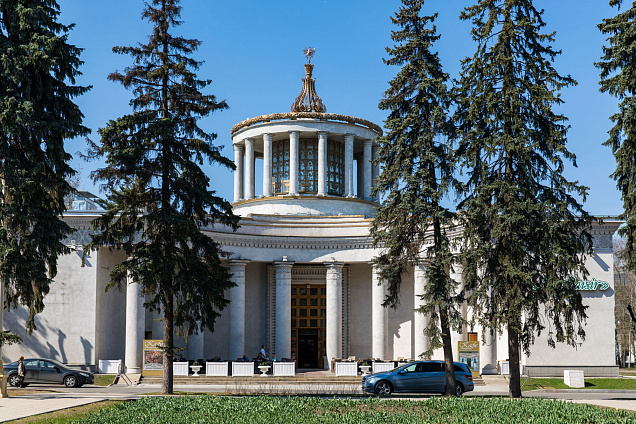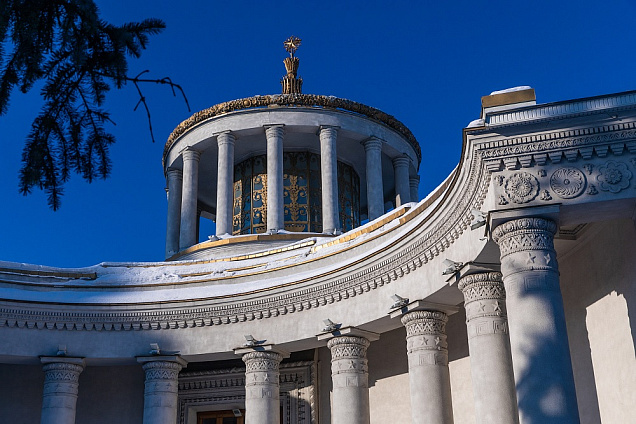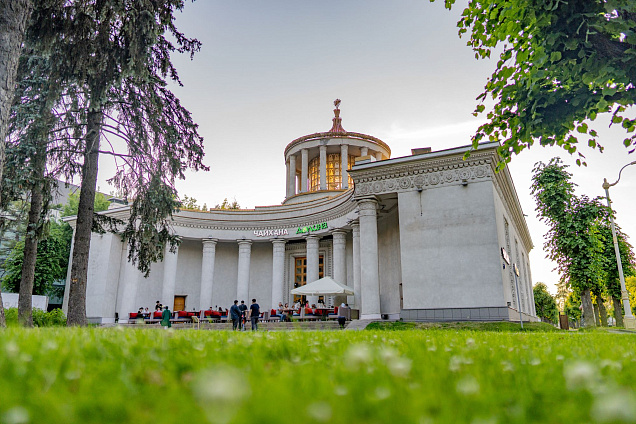Pavilion No. 60 Consumer Cooperation
The pavilion's neoclassical architecture is elegantly complemented by ornaments in the Russian style. The semicircular colonnade at the entrance and the belvedere adorned with a golden wreath bearing an openwork decorative composition lend a touch of sublimeness to the building.
Year built, architect
The pavilion was built in 1954. Architects: Viktor Lebedev and Pavel Shteller.
Name changes
Before 1959: Central Black Soil Regions, then, until the early 1980s: Tsentrosoyuz. Later: Consumer Cooperation.
Status
Federal cultural heritage site.
Current state
The pavilion houses a café.
Historical Background
When Pavilion No. 60 was built in the 1950s, the original plan was for it to represent the regions of Kursk, Tambov, Penza, Voronezh and Oryol. The pavilion's neoclassical architecture is elegantly complemented by ornaments in the Russian style. The semicircular colonnade at the entrance and the belvedere adorned with a golden wreath bearing an openwork decorative composition lend a touch of sublimeness to the building.
Despite the generally humble interior, the central room boasts a magnificently decorated translucent dome ceiling with images of hay sheaves, sickles, five-pronged stars, wreaths and other details alluding to the decorative motifs of Empire architecture.
History of Exhibits
The Central Black Soil Regions exposition occupied Pavilion No. 60 for the first five years of its existence. Subsequently, the Tsentrosoyuz exposition was moved here from the building next door. It was renamed Consumer Cooperation in the mid-1980s.
The materials on show in the pavilion presented evidence of growing retail turnovers, increasing procurement of rural produce and raw commodities, expansion of the financial and technological resources for consumer cooperation, best practice and further growth outlook. Mock-ups of rural shopping centres were also on display. The exposition also covered the subjects of access to quality cultural services in rural communities and improved financial well-being of rural households.


